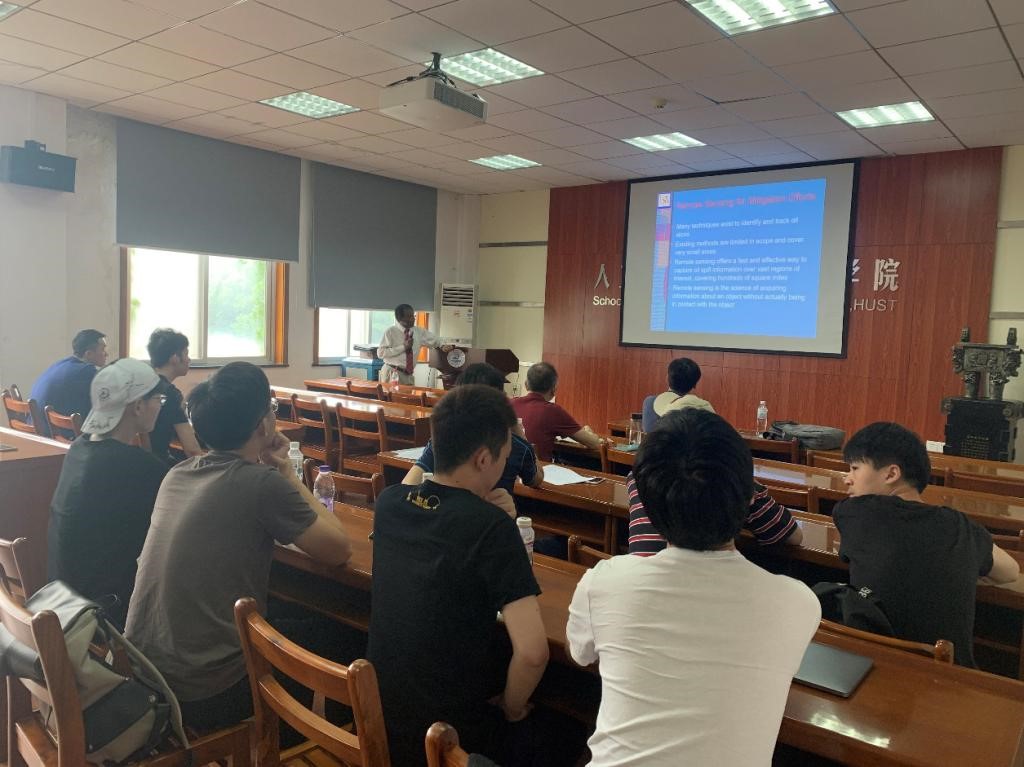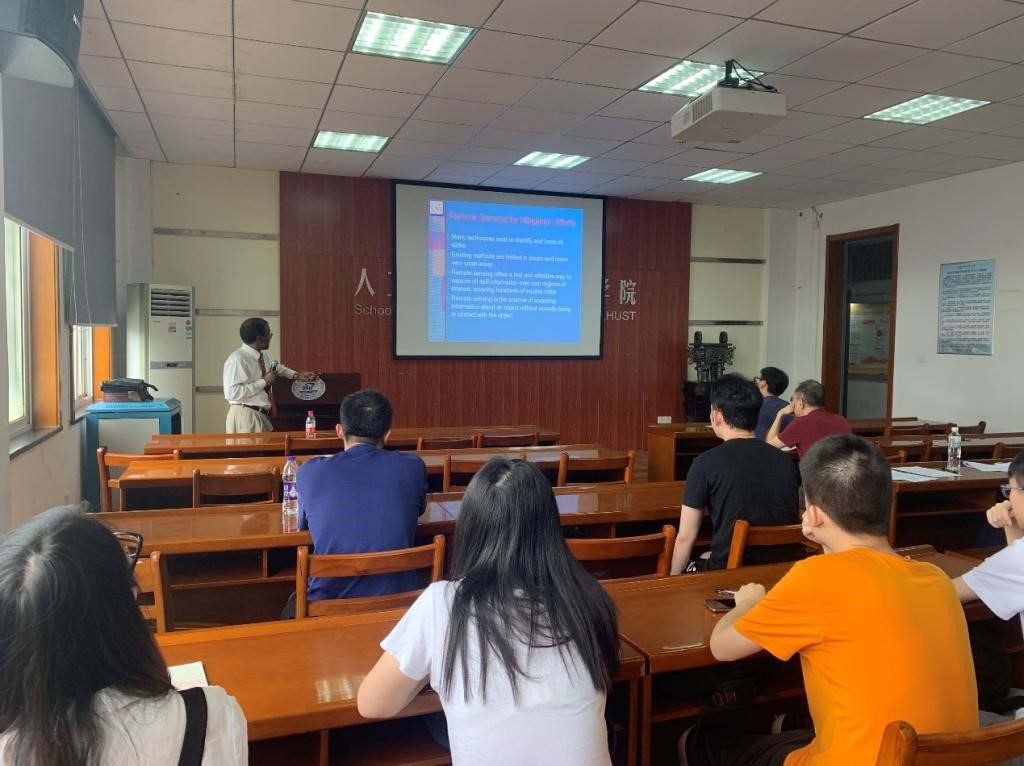On the morning of July 8th, 2019, Professor Mohammad S. Alam, an overseas expert in the “Innovation and Intelligence Initiative Base for Computational Intelligence and Intelligent Control Discipline”, at the invitation of Prof. Zeng Zhigang, the head of the base, came to our school for academic exchanges and made an academic report entitled “Oil Spill Detection, Identification and Tracking via Hyperspectral Imaging”. The report was hosted by Associate Professor Gao Changxin and nearly 20 teachers and students from our college attended the seminar.
Professor Alam received his bachelor's degree and master's degree of electrical and electronic engineering from the Bangladesh University of Engineering and Technology (BUET) in 1983 and 1985, a master's degree in computer engineering from Wayne State University in 1989, and a doctorate degree in electrical engineering from the University of Dayton in 1992. He is currently a professor of electrical engineering and computer science and dean of the School of Engineering at Texas A&M University, Kingsville. From 2001 to 2015, he served as the head of the Department of Electrical and Computer Engineering at the University of South Alabama (USA) and in 2016 served as the first chair professor of electrical and computer engineering awarded by Warren H. Nicholson. Professor Alam has made significant contributions to renewable energy, smart energy management and control, and image processing, and written or co-authored 525 publications. Professor Alam is also a member of several associations, including IEEE, IET, OSA, SPIE, IS&T, IoP, and IAPR.
In the report, Professor Alam first described the oil spill accident caused by the explosion of the BP Deepwater Horizon rig in the Gulf of Mexico on April 20th, 2010, and introduced the oil detection, identification and tracking technology based on hyperspectral imagery. Then he gave a brief introduction to hyperspectral imaging techniques which could capture oil spill information that covered hundreds of square miles of interest. Next, Professor Alam reviewed the development trend and progress of oil spill detection based on the hyperspectral image in recent years, and presented a kind of qualitative and quantitative understanding based on the detection, identification, and substances distribution of oil spoil and its derivatives under sea level on the surface of a wide region of interest. Finally, the results on various data sets were shown. Compared with current technology, the test results obtained by Professor Alam's proposed one showed better performance, and the effectiveness of the method was verified.
Professor Alam's report was profound and intriguing but in simple language. Along with frequent interactions, the atmosphere of the conference venue was very active, and the teachers and students benefited a lot. Many students said that they had had a deeper understanding of hyperspectral target detection and recognition. Finally, Associate Professor Gao Changxin expressed his gratitude to Professor Alam for his wonderful report. Professor Alam's visit has promoted further exchanges and cooperation between our college and Texas A&M University in academic research.



